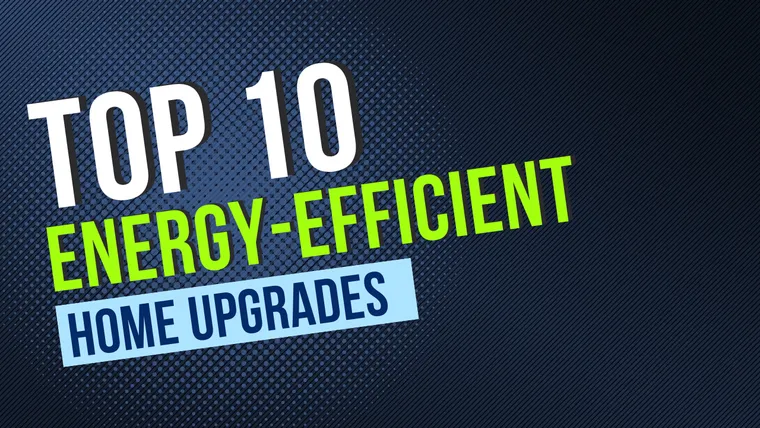Video Transcript:
Hey Empire Builders, let's talk about something that's become more than just a buzzword in real estate: Energy Efficiency. It’s not just trendy anymore—it’s a priority for homeowners, buyers, and sellers. And it makes sense, right? With rising energy costs, greater environmental awareness, and a push for sustainable living, energy-efficient upgrades are becoming a top priority.
These upgrades can help homeowners save money on utility bills, make homes more comfortable and healthier, and even extend the life of major home components. Today, I’m breaking down the top 10 energy-efficient upgrades that can help homeowners cut costs, live comfortably, and contribute to a greener future.
My name is Christian, and I’m the Director of Content for Empire Learning. We’re all about helping real estate pros like you make money, save time, and crush it in your business.
The Top 10 Energy-Efficient Upgrades
- Insulation
Proper insulation is a game-changer. Without it, about 20-30% of your home's energy could be lost through walls, ceilings, and floors. Key areas to focus on include the attic, walls, and basement or floors. Options like fiberglass, spray foam, blown-in, or rigid foam boards can keep your home cozy in the winter and cool in the summer. - Windows and Doors
Heat gain and loss through windows and doors can account for up to 30% of a home’s energy use. Upgrading to energy-efficient options like double or triple-pane windows with low-E coatings can make a huge difference. Don’t forget frames—materials like vinyl or fiberglass are better for insulation. For doors, look into insulated cores and tight weather stripping. - HVAC Systems
Your HVAC system is likely the biggest energy user in your home. Upgrading to energy-efficient models with an Energy Star label or high AFU ratings can have a major impact. Pair your HVAC with a smart thermostat for even more savings. - Air Sealing
Drafts around doors, windows, or electrical outlets might seem small, but they can cost you big in energy bills. Seal leaks with caulking, weather stripping, or foam sealants to improve comfort, control moisture, and keep out allergens and pests. - Lighting
Switching to LED bulbs can cut lighting energy use by up to 75%. LEDs last longer, reducing replacement costs. For added convenience, consider smart lighting systems that let you control lights via your phone and create the perfect ambiance while saving energy. - Solar Panels
While they require a higher upfront cost, solar panels come with tax credits, rebates, and long-term savings on utility bills. They harness sunlight to power your home, and many states offer net metering, which gives credits for excess electricity sent back to the grid. - Energy Star Appliances
Appliances like fridges, washers, and dryers run daily and can use a lot of energy. Upgrading to Energy Star-certified models can significantly reduce energy use. Many modern appliances also have smart features for added efficiency. - Geothermal Heat Pumps
These systems use the Earth’s stable underground temperature to heat and cool your home. While they’re an investment, the energy savings and system longevity are unmatched. - Green Roofs
A green roof is a layer of vegetation on your roof. It improves insulation, reduces heat absorption, and manages stormwater, making it a unique and effective energy-saving feature. - Smart Home Tech
Devices like smart thermostats, lighting, and energy trackers give you control over how your home uses energy. These tools are great for saving energy, reducing costs, and promoting sustainable living.

